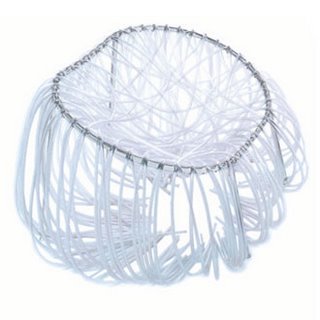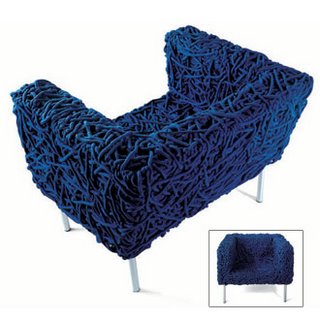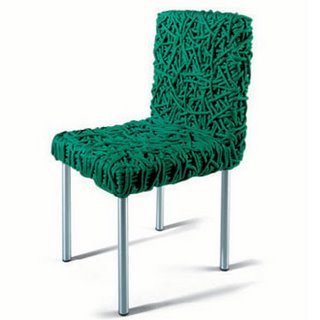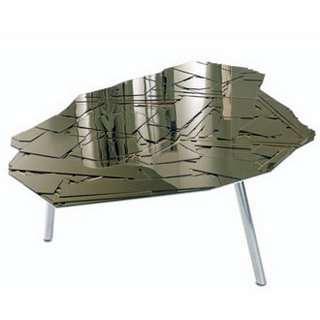Friday, June 30, 2006
Fernando and Humberto Campana Vermelha Armchair
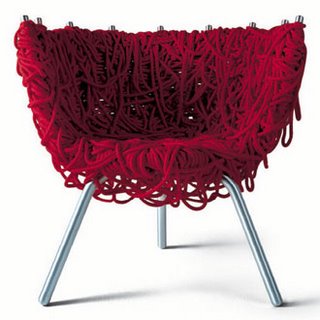
Wrap-around armchair with steel frame painted with epoxy powders.
Several days’ manual work is required to build the seat, together with high expertise for the weaving. The five hundred metres of special rope with an acrylic core, covered in cotton, are first woven onto the frame to create a structure and then plaited by consecutive overlapping, leaving sufficient surplus to form a kind of random weave which creates an unusual padding.
